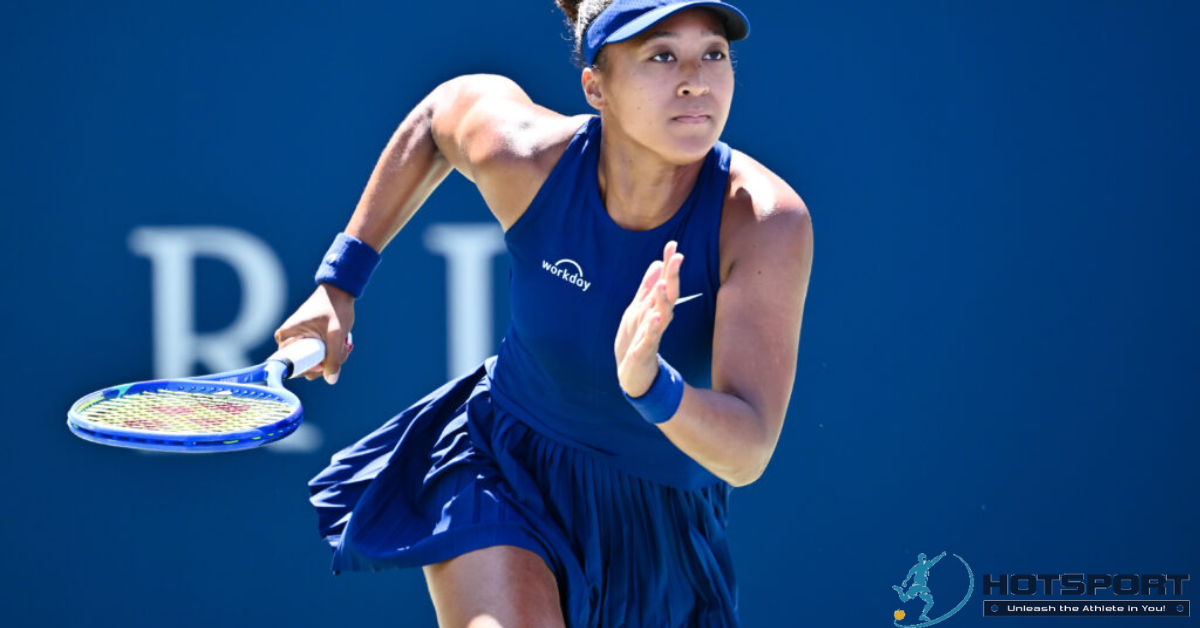Naomi Osaka: The Japanese Tennis Star
Naomi Osaka is one of the most inspiring figures in global tennis, an athlete who transcends the court with her skill, charisma, and cultural impact. Born in Japan with Haitian and Japanese roots, she became the first Japanese player to win a Grand Slam singles title and the first Asian to reach the top of the WTA rankings. Her journey, marked by historic achievements, personal challenges, and a commitment to social causes, has made her a global icon. This article explores Naomi Osaka’s life, career, and legacy, highlighting her path through 2025.
Childhood and Multicultural Roots
Origins and Early Years
Naomi Osaka was born on October 16, 1997, in Osaka, Japan, to Tamaki Osaka, a Japanese mother, and Leonard François, a Haitian father. Her story began in a multicultural environment, where she and her older sister, Mari, grew up immersed in both Japanese and Haitian cultures. At age three, the family moved to the United States, settling in Long Island, New York, to live with Leonard’s parents. In 2006, they relocated to Florida, seeking better tennis training opportunities.
The decision to represent Japan in sports was made early by the family. Despite growing up in the U.S., Naomi and Mari always identified with Japanese culture, a choice reflecting not only emotional ties but also pride in their heritage. According to their parents, this decision was never driven by financial or external pressures but by a genuine connection to Japan.
Inspiration in Tennis
Naomi’s interest in tennis began early, inspired by her father, Leonard, who, despite never playing the sport, was motivated by watching the Williams sisters compete at the 1999 French Open. He decided to train his daughters, Naomi and Mari, following the model of Richard Williams, father of Serena and Venus. Using videos and observations, Leonard coached the girls on public courts in Pembroke Pines, Florida, during the day, while they studied at home in the evenings.
Naomi began intense training from a young age, dedicating up to eight hours a day to the sport. Her routine was rigorous, balancing practice and studies with little time for socializing. This family-focused environment shaped her determination and discipline, traits that would define her career.
Rise in Professional Tennis
Early Steps in the Circuit
Naomi Osaka entered the professional tennis scene at 16, when she defeated former US Open champion Samantha Stosur at the 2014 Stanford Classic. This victory marked her WTA Tour debut and signaled the emergence of a new talent. Two years later, in 2016, she reached her first WTA final at the Pan Pacific Open in Japan, entering the top 50 of the world rankings. That year, she also earned the WTA Breakthrough Player of the Year award, solidifying her rise.
Despite not competing in the ITF junior circuit, Naomi built her career in U.S. tournaments, particularly in Florida, where limited early support from federations posed challenges. Her determination and family support were crucial in overcoming these barriers.
Historic Achievements in 2018
The year 2018 was a turning point for Naomi Osaka. In March, she won her first WTA title at the Indian Wells Open, defeating top players, including then-world No. 1 Simona Halep. Seven months later, at 20 years old, she made history by defeating Serena Williams in the US Open final, becoming the first Japanese player to win a Grand Slam singles title. The match, marked by officiating controversies, highlighted Naomi’s composure, as she stayed focused and showed empathy by consoling Serena afterward.
Her US Open victory not only elevated her status in the sport but also made her a symbol of diversity and inclusion in Japan, where her multiracial identity challenged traditional notions of “pure Japanese” identity.
Establishing Herself as a Global Star
World No. 1
In 2019, Naomi solidified her status as one of the world’s top players. After winning the Australian Open, defeating Petra Kvitová in the final, she became the first Asian to reach No. 1 in the WTA rankings on January 28, 2019. This milestone was significant not only for Japan but for the entire Asian continent, inspiring a new generation of athletes.
Naomi continued to shine, winning two more Grand Slam titles: the 2020 US Open and the 2021 Australian Open. Her victories on hard courts, where she excels, showcased her powerful serve, precise groundstrokes, and mental toughness, making her a formidable opponent.
Olympic Participation
Naomi Osaka achieved another milestone in 2021 at the Tokyo Olympics. As Japan’s biggest sports star at the time, she had the honor of lighting the Olympic cauldron during the opening ceremony, a historic moment that underscored her global influence. Despite being eliminated in the third round by Marketa Vondrousova, her participation symbolized Japan’s diversity and modernization.
In 2024, Naomi returned to the Olympics in Paris, competing at world No. 125. Though she did not reach the semifinals, her victory over world No. 1 Iga Świątek at the French Open showed she could still compete at the highest level.
Personal Challenges and Mental Health
Advocacy for Mental Health
Naomi Osaka brought critical attention to mental health in sports. In 2021, after withdrawing from the French Open due to media pressures and anxiety, she published an article calling for greater empathy and respect for athletes’ mental well-being. Her decision to prioritize her health, despite facing criticism, inspired other athletes to speak openly about the issue. In Japan, where mental health is often stigmatized, her voice had a significant impact.
Naomi also faced personal challenges, including racism directed at her family in Japan and the U.S. Her multiracial identity placed her at the center of discussions about race and belonging, particularly in Japan, where she challenged traditional stereotypes.
Motherhood and Return to the Court
In January 2023, Naomi announced her pregnancy with her partner, rapper Cordae. Their daughter, Shai, was born in July 2023, and Naomi paused her career to focus on motherhood. She returned to the court at the 2024 Brisbane International as a wild card, showing resilience by competing after a year away. Despite facing injuries, such as an abdominal issue that forced her to withdraw from the 2025 Australian Open, Naomi continued to display determination.
Activism and Cultural Impact
Fighting Racism
Naomi Osaka used her platform to combat racism and promote social justice. During the 2020 US Open, she wore masks bearing the names of victims of racial violence, such as George Floyd and Breonna Taylor, drawing attention to issues of inequality. Her actions sparked global conversations and reinforced her role as an athlete who transcends sports.
In Japan, her statements on race and identity opened discussions about diversity, a topic often avoided. As a “hafu” (a Japanese term for people of mixed ancestry), Naomi challenged cultural norms and inspired other multiracial athletes, such as Rui Hachimura and Abdul Hakim Sani Brown.
Connection to Japanese Culture
Despite growing up in the U.S., Naomi maintains a strong connection to Japanese culture. She enjoys anime and manga, using them to study the Japanese language. In 2016, after a US Open match, she referenced the Pokémon theme song, showcasing her love for Japanese pop culture. In 2017, inspired by the manga Haikyū!!, she tried playing volleyball, though unsuccessfully. These moments highlight her authentic personality and bond with Japan.
Playing Style and Sporting Legacy
Technique and Mental Strength
Naomi Osaka is known for her aggressive playing style, with powerful serves and precise groundstrokes. Her dominance on hard courts, where she won all four of her Grand Slam titles, is unmatched. Former Czech player Barbora Strycová nicknamed her “shinkansen” (Japanese bullet train), highlighting her speed and power.
Her mental strength is also a key asset. Even under pressure, as seen in the 2018 US Open final, Naomi displayed composure and empathy, consoling her opponent and earning the respect of fans.
Achievements on Clay
While best known for her hard-court success, Naomi worked to improve on clay. In 2025, she won the WTA 125 in Saint Malo, her first title on this surface, defeating players like Diane Parry and Petra Marcinko. This victory helped her return to the top 50, showcasing her versatility and determination.
Personal Life and Off-Court Influence
Relationship and Family
Naomi is in a relationship with rapper Cordae, with whom she has a daughter, Shai. She often shares personal moments, such as her excitement at the thought of Shai watching her play and saying, “That’s my mom.” Her family, particularly her parents, remains a source of support, with ties to her maternal grandparents reestablished in 2008.
Impact on Fashion and Media
Beyond tennis, Naomi has made her mark in fashion and media. Her authentic personality and multiracial background have made her one of the world’s most marketable athletes. She has appeared in global campaigns and featured in magazines like Marie Claire. Her role in the International Olympic Committee’s “Stronger Together” campaign encouraged girls to embrace their differences, amplifying her influence.
Future and Legacy
At 27, Naomi Osaka continues to evolve as an athlete and individual. Her choice to compete in smaller tournaments, like the WTA 125 in Saint Malo, reflects her humility and drive to improve. Despite injuries and challenges, she remains focused on returning to the top, with plans to compete in the 2025 WTA 1000 in Rome against players like Sara Errani.
Naomi’s legacy extends beyond trophies. She has opened doors for discussions about mental health, diversity, and inclusion in Japan and worldwide. As an athlete who combines talent, empathy, and courage, Naomi Osaka continues to inspire millions, both on and off the court.



